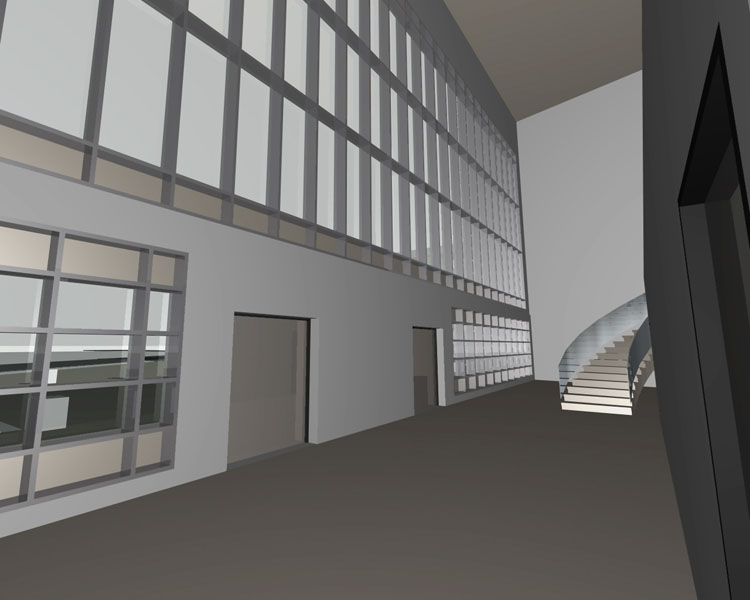

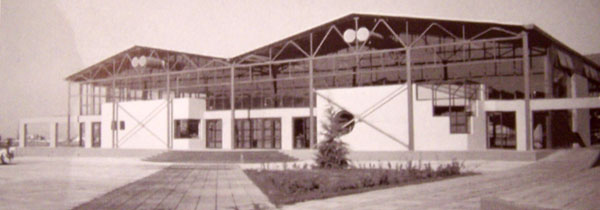

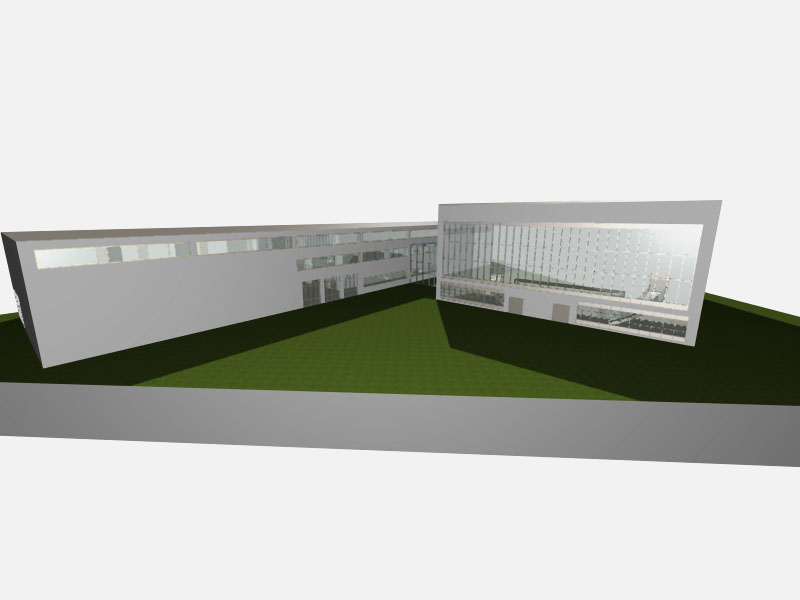

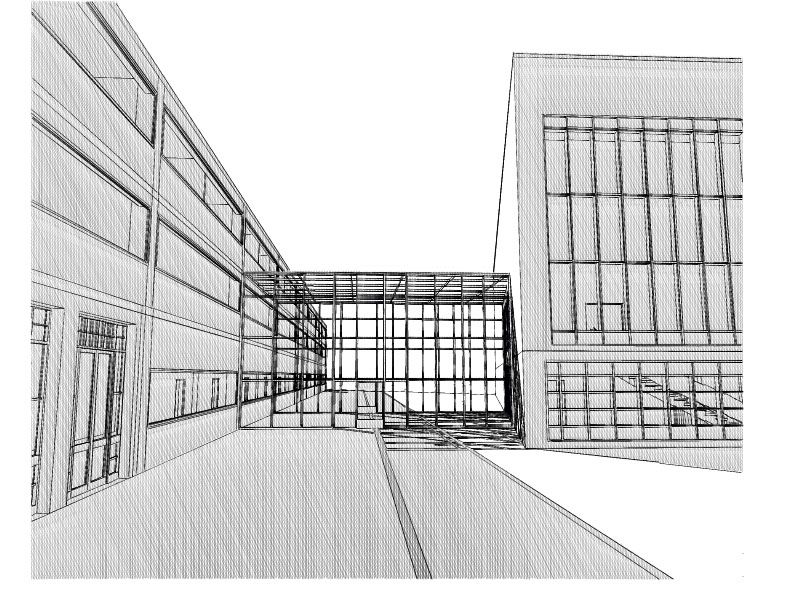

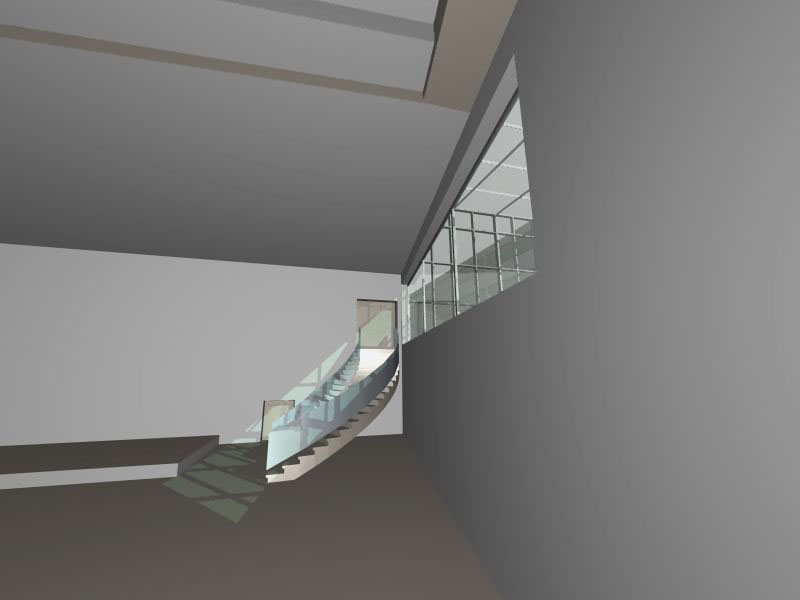

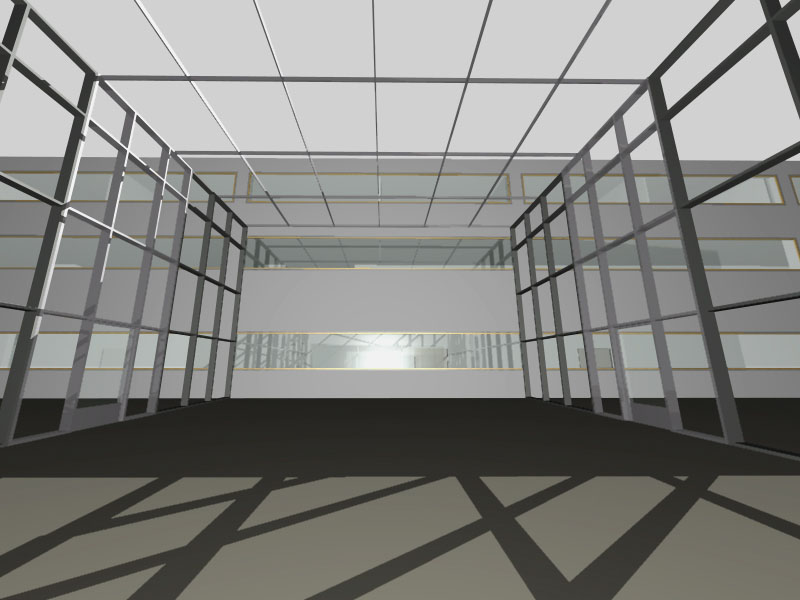

The lack of space of the mechanical engineer department of the University of Thessaly, leads to a new building being proposed, in order to cover their upcoming needs. The new department is suggested just next to the technical compound of the University of Thessaly. Moreover, it follows the form of this group of buildings, but also uses industrial architecture characteristics. The project consists of a central building that covers all the everyday needs of the students and an amphitheater inside an independent building. The faculty is also equipped with an external, independent, multipurpose unit. The main concept was to create an interesting and yet useful building, that manages to follow the existing limiting legislation, in the context of an overall debate between the young architects, which are trapped among the free spirit of the academic design and the existing market reality. Finally there was a lot of attention paid on the building technology, in order for the proposed units to be completely viable and get full advantage of its orientation.
Supervisor: Triantafillidis Giorgos
Reference Number: 72
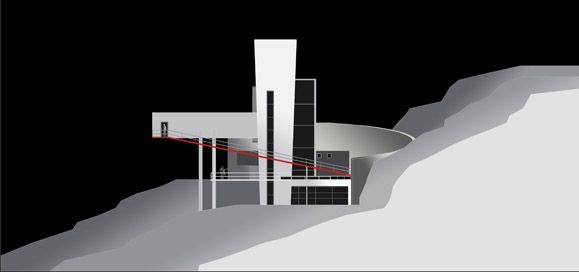

Astronomy is one of the most exciting and evolving sectors of science.
The issue that tests is a challenge for whoever takes it up.
The universe is a huge space, full of objects and functions that earth has no equivalents. From every aspect, it is very useful for modern man to become aware of the environment that surrounds us and acknowledge the secrets of the universe.
That is why our architectural proposition asks for a first touch with the unknown...
Modern amateur astronomy has succeeded in a rapid way these last years.
Many “homeless” groups are searching for a place to cover their anxiety for the universe.
This block of buildings is about to give the opportunity to all of them to stay in it for a particular time to do their research.
Small camps were astronomers and amateur scientists of different skills decide by their own initiative, to live together and study the unknown…
Supervisor: Tzirtzilakis Yorgos
Reference Number: 79
The object of the intervention is the unification of the area with urban web, the attribution of it to its residents and the development of the natural scenery. All these are achieved with the creation of more accesses from different points of both sides of the stream, as far as the walkers and the motorists are concerned, aiming at the attraction of the first along the stream bank and the best traffic. There is an effort of penetration of the routes from one (Ano Toumba) to the other (Kato Toumba) and the opposite.
In the phase of analysis it has been observed that the residents of the area consider the stream as a frontier - obstacle. That is also strengthened by the fact that all the roads towards the stream stop in front of it. However, there are a lot of uses from both its sides, which are problematic because of the above confrontation and the lack of planning.
The addition of other uses except the existing ones (street market, playground and city bus terminal) that are designed and preserved, will change the area into a pole of attraction for tourists from the wider area as well. The public character of the buildings and their functions that are related to the direct service to people, help to this attraction.
The application of the above proposal is achieved with the creation of urban “platform” on which all the services area seated. Just below it and over the water there is another one that function that functions as municipal parking.
The solution of urban “platform” was given because the aim was not the landfill of the stream, but its development for attracting the residents of the area.
Its configuration includes spaces of green, a square, a cultural centre, a centre of civil services, a health centre, a library, a street market, a restaurant, a refreshment store, W.C. and a parking.
This proposal adapted to the needs of each area, may also refer to other parts of the stream creating some poles of attraction for the residents.
Supervisor: Triantafillidis Giorgos
Reference Number: 95
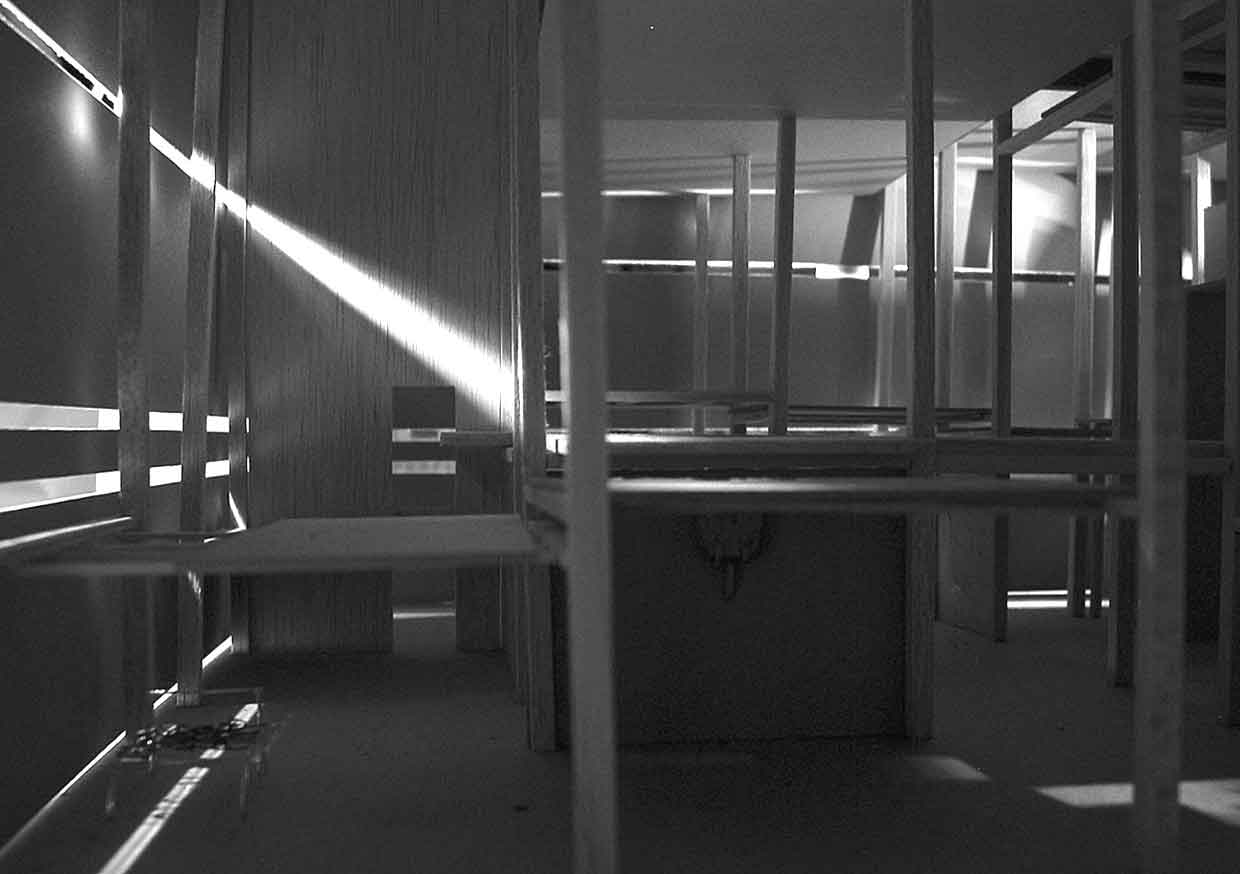

Two years ago an architectural competition for the restoration of Kontos Tower in Ano Lechonia was announced. The municipality Artemidas which includes the village of Ano Lechonia, asked for proposals so that this building can be used as a cultural centre, The study rewarded was the one that came up to the requirements of the new function of the building and also to those of the Municipality.
The company Studio 75 to which the study was assigned came to the following conclusions: bringing back the shell to its original/ initial form, the adjustment of the interior to the requirements of the new functions and the construction of the exterior space for mass visits and events.
The Municipality being responsible for the completion of this study chose the one with the lowest cost to replace the material and the architectural elements by new ones. This means the demolishing of the existing and the replacement by new ones.
But what happens however to the remembrance and the material substance of this building.
Do any traces remain????
I will keep a critical attitude towards the typical restoration which vanishes the building which was supposed to be preserved.
Contrary to the “ mortification” of the building I propose the following alternative strategy:
the transformation of the dead period into an active period for living.
Supervisor: Tzirtzilakis Yorgos
Reference Number: 103
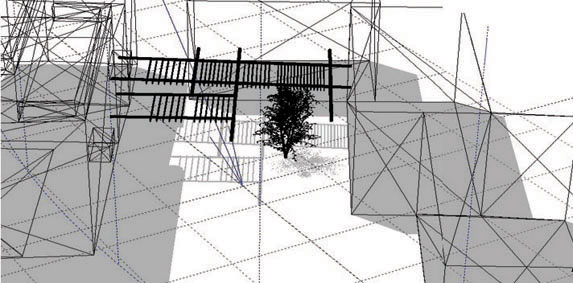



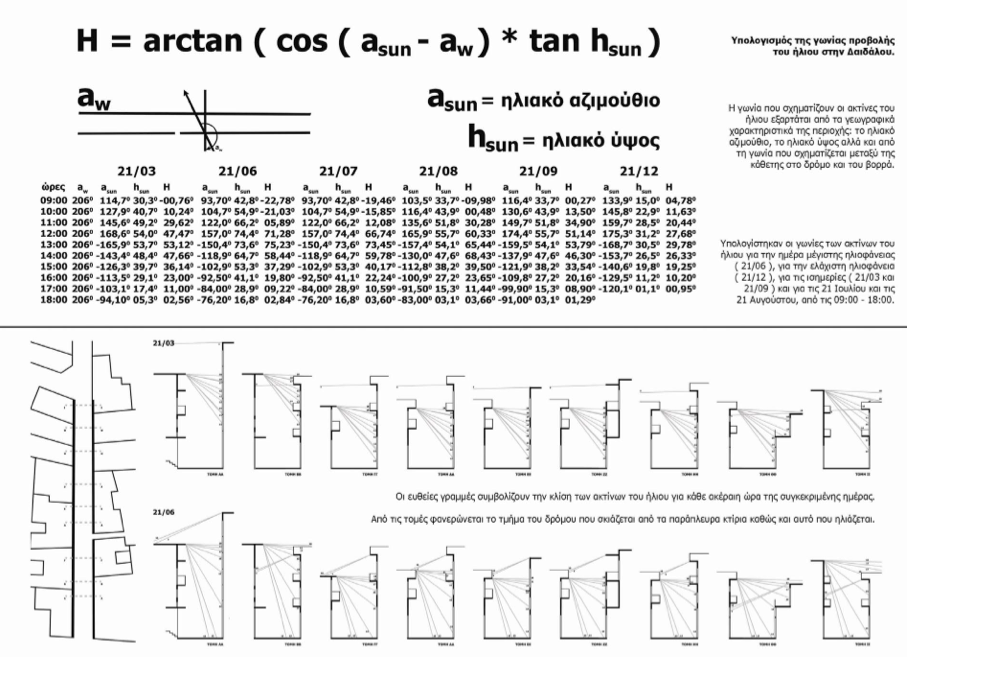

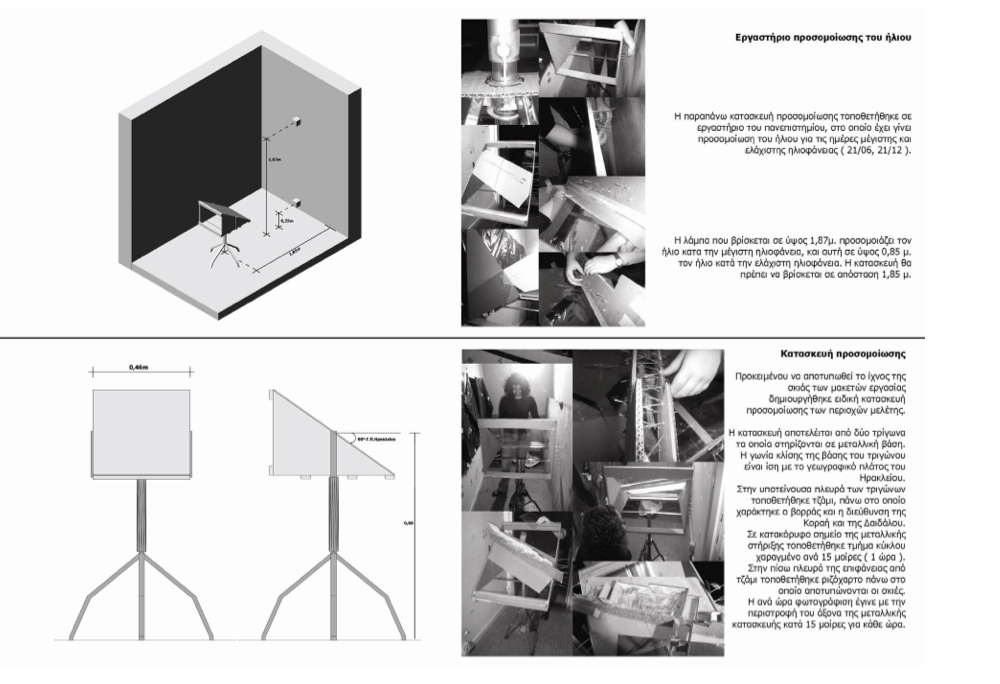

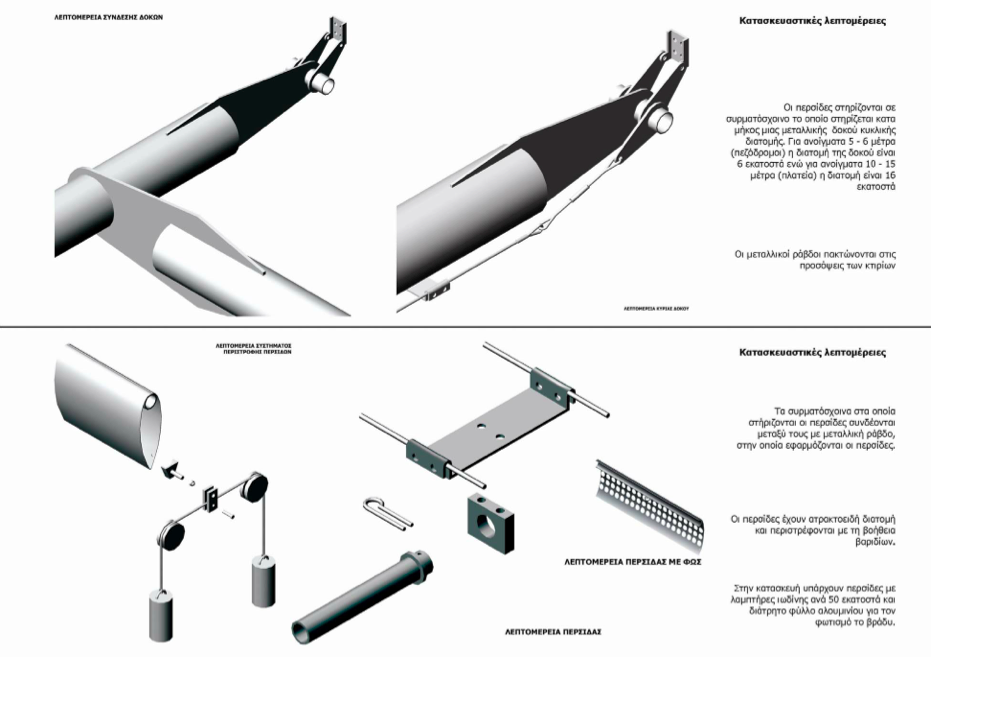

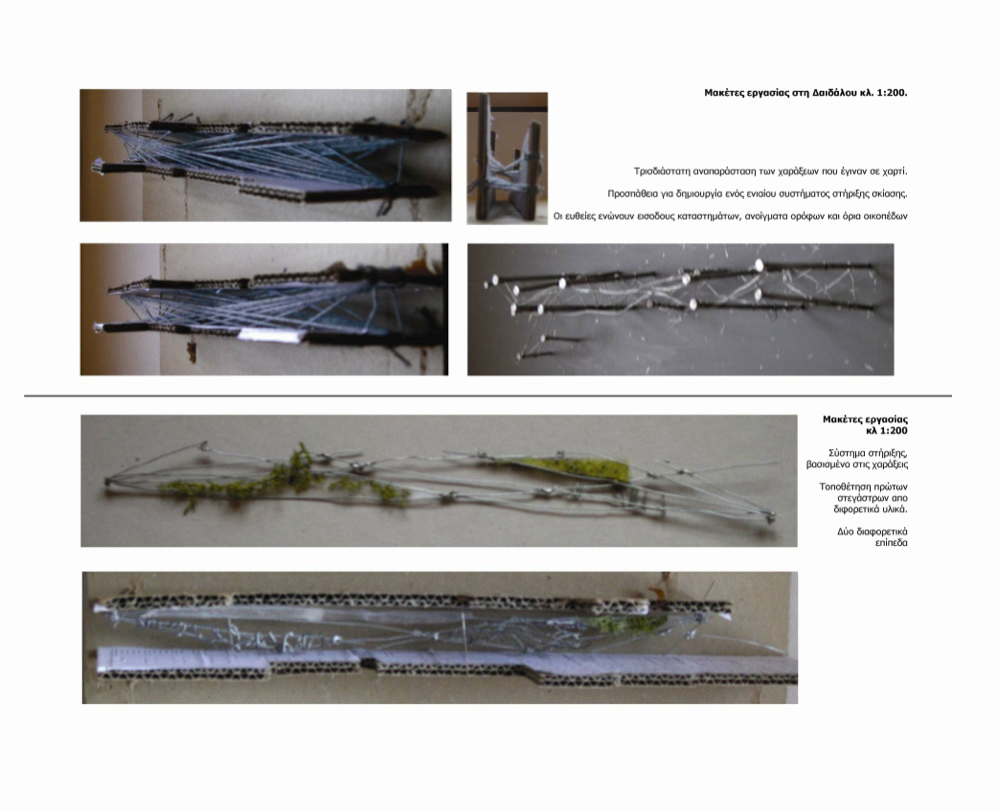

In the present project a bioclimatic intervention in a central region of Heraklion of Crete is attempted. The region of intervention includes the pedestrian zones of Daidalou, Korai and the square at the pedestrian zone of Korai. In the region are located mainly commercial shops (Daidalou) and restaurants and cafeterias (Korai, square).The orientation of the two streets is North-eastern – South-western. The heights of the adjacent buildings vary, while the width of the two streets oscillates from 5 to 6 metres.
Even though the width of streets is not big, because of the orientation, the region is exposed to sun during the day. As a result there is a lack of thermal comfort and reflections are caused at the windows of shops. The problem is intensified in the summertime. For the increase of the rate of comfort of users, a light metal construction is proposed, which regulates the percentage of exposure to sun of the region each time, without preventing the movement of the air.
In the first phase of our study the centre of Heraklion is analysed from photographs and maps. The region of intervention is located and sections are designed, so that the shade that the existing buildings create is calculated from 9:00 – 17:00 for 21/03, 21/06, 21/07, 21/08, 21/09 and 21/12. On these sections the beam of helium is designed for each hour. Then, the suitable places that shades can be placed are tried.
At the same time, we study the texture of the shade that various materials can provide. Models of shades are built, which give different shades and possible combinations are made. Then, linings are drawn at the region so that a unified network for the places of the shades is created. According to these linings models are made, where various shades are placed. The density of the shades differs depending on the time each region is exposed to sun. Dense shades are placed at the parts of the street which is exposed to sun for a long time. A specific construction of simulation is made according to the geographic length and width of the region, which was used in a laboratory which simulates the sun in the university. Models were photographed and the shades were imprinted from 10:00 – 17:00 for the day of the biggest sunlight exposure (21 June).
From the above we are led to the creation of a metal construction which will be constituted by self-adjusting shades, of different density and bent. The shelters will be constituted by blinds of aluminium, 15cm width and 3m length, which will be turned proportionally. The blinds are supported in wipe rope, which is supported in metal joists of circular cross-section. For distances up to 6 metres (pedestrian zones) the cross-section of joists is 6 cm, while for 10 – 15 metres (square) 16cm. The metal joists are applied to the facades of adjacent buildings. In certain blinds lamps will be incorporated, which will light the region during the evening hours.
The shades that are proposed are separated in two levels. In the lower level, in the entire region, the metal joists are perpendicular to the facades of the buildings, while the blinds parallel to them. However, the shades in the higher level at the pedestrian zones are differentiated, where the joists are placed diagonal, creating acute and obtuse corners with the facades of the buildings. Thus, the texture of the shade is differentiated depending on the use (street – square).
Finally, a research was conducted for the possible replacement of the blinds which are proposed, with other alternative materials. They can, therefore, be adapted blinds inflatable, perforated, glassy, colourful, photovoltaic etc, while their mechanism of rotation can also become automated via special photosensor.
Supervisor: Trova Vasso
Reference Number: 57


The building ground of ‘’ΥFΑΝΕΤ’’ is located at the region of Kato Toumpa at Salonica and it adjoins the roads of Perdika, Omirou, Papafi and the Konstantinidis stream. It is 19.500 square meters in area. The goal of the present research is the construction of a square via which will be achieved an urban intervention in the web of wider region with the embodiment of cultural centers, creating, in this way, areas that include the meaning of the “alive community”. On the whole, this suggestion aims at the creation of building enviroment of qualitative prescriptions and areas which provide services, so that the residents’ needs, as well as other people’s needs, for taking full advantage of spare time and reducing the need of transfer to the central areas of the town will be satisfied.
Considering that the subject of the architectural resolution was to come as close as possible to the direction of interaction and conversation with the users, as well as, the current changing culture of the surrounding city, the uses suggested are of super-local meaning, but their type and range do not, generally, change the character of the greater area. Initial aim and fundamental principle during the designing process was the attempt to create a seemingly vacuity, “slit” of the urban web which will be accessible from all the sides of the building area putting an end to the impenetrable walls and the sense of unapproachable, making, consequently, the movement flowing.
All the above goals which constituted the fundamental principles of this design led to the construction of an urban square which includes five different building units, whose shape and size was created so that the balance between building and non-building in the plot will be succeeded. Taking into consideration the place of the building ground regarding the town and its centre, the usages of the perimetric buildings and the existence of public schools at all stages (primary, high school and senior high school), we resulted in creating a cultural square which includes a fairground, a library, a museum, a building where a lot of public services will be located (KEΠ), a refreshment building as well as an underground parking.
Supervisor: Triantafillidis Giorgos
Reference Number: 93
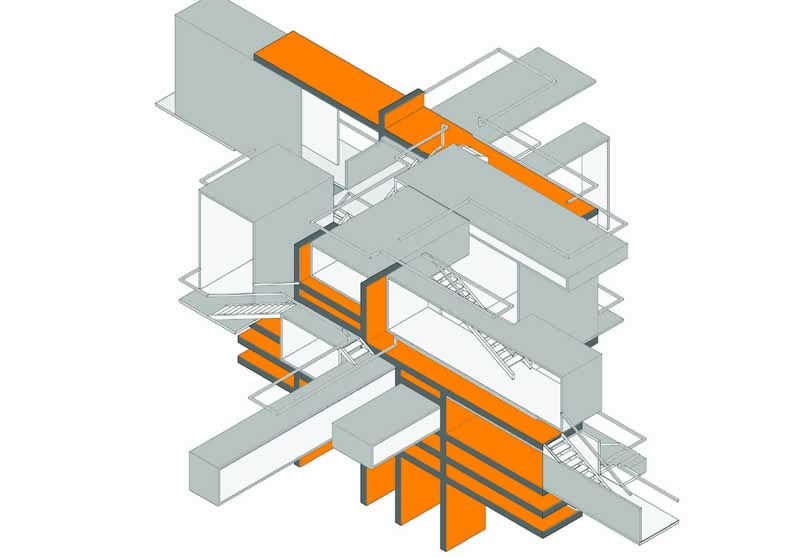

The subject of this project is a search on space in regard with the human visual field and on how the second could modulate the first. The research started with some cases on how space would be affected through a different placement of openings. The research on the placement of the openings and on the way that visual and non-visual are affected produced a series of spatial experimentations. Initially they didn’t concern a particular location. After that an actual location was chosen where the moves of the previous experimentations were put into practice. Through the perimetric shoot of the location certain views were chosen which were desirable to be viewed. Then the zones of unopened and open were created. The object of spatial design was a bridge.
Supervisor: Trova Vasso
Reference Number: 99
The establishment of a walk in the commercial port of Volos aims at giving back to the city a characteristic urban part, one that remains to a major degree unknown to its residents and visitors. The basic features of the port, its everyday uses, the contact with the sea, the views from and to the cityscape, the landmarks are involved into a changeable tour that connects the actual situation to an urban luna perspective.
Supervisor: Triantafillidis Giorgos
Reference Number: 73

